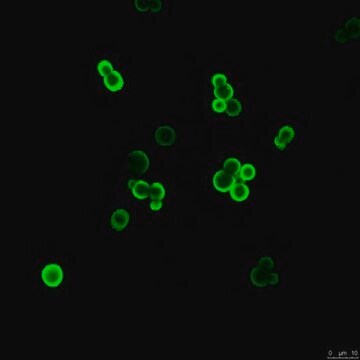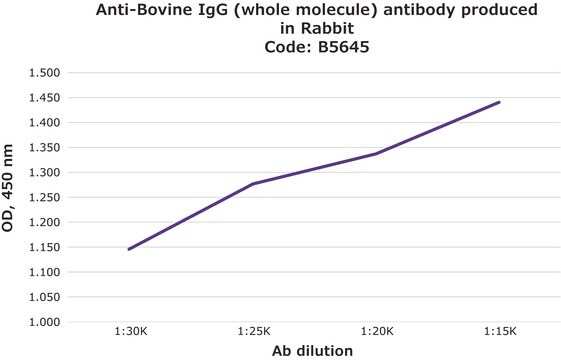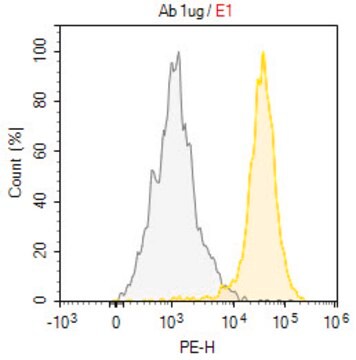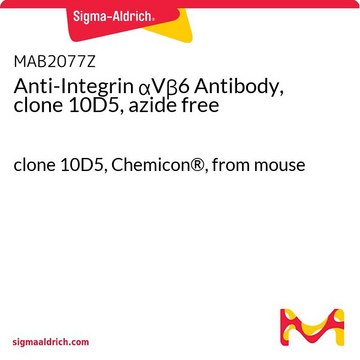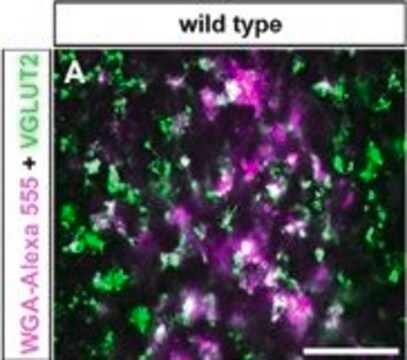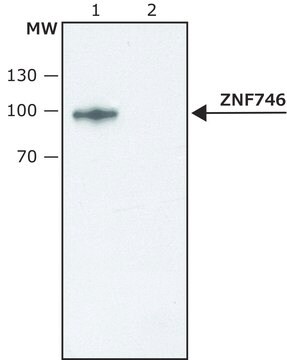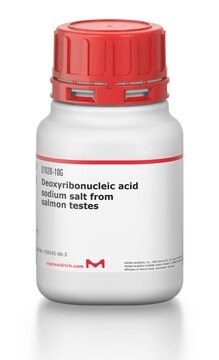MABF3125
Anti-Glucuronoxylomannan/GXM Antibody, clone 3E5
Synonym(s):
GXM
About This Item
Recommended Products
biological source
mouse
Quality Level
antibody form
purified antibody
antibody product type
primary antibodies
clone
3E5, monoclonal
mol wt
observed mol wt ~N/A kDa
purified by
using protein G
species reactivity
fungi
packaging
antibody small pack of 100
technique(s)
ELISA: suitable
immunohistochemistry: suitable
neutralization: suitable
isotype
IgG1κ
epitope sequence
Unknown
Protein ID accession no.
UniProt accession no.
storage temp.
-10 to -25°C
Specificity
Immunogen
Application
Evaluated by Immunohistochemistry (Paraffin) in Cryptococcus neoformans infected Mouse lung tissue sections.
Immunohistochemistry (Paraffin) Analysis: A 1:50 dilution of this antibody detected glucuronoxylomannan/GXM in in Cryptococcus neoformans infected Mouse lung tissue sections.
Tested Applicatins
Neutralizing: A representative lot neutralized Gonoxylomannan/GXM and prevented toxicity in mice. (Lendvai, N., et al. (1999). J Infect Dis.180(3):791-801).
Immunohistochemistry Applications: A representative lot detected Glucuronoxylomannan/GXM in Immunohistochemistry applications (Feldmesser, M., et al. (1997). J Immunol. 158(2):790-9; Lendvai, N., et al. (1999). J Infect Dis. 180(3):791-801).
Fluorescence Activated Cell Sorting (FACS): A representative lot was used for sorting J774 and CHO cells labeled with this antibody in Fluorescence Activated Cell Sorting applications (Saylor Hawk, C., et al. (2019). J Immunol. 202(9):2782-2794).
ELISA Analysis: A representative lot detected Glucuronoxylomannan/GXM in ELISA applications (Janda, A., et al. (2015). J Biol Chem. 290(19):12090-100; Saylor Hawk, C., et al. (2019). J Immunol. 202(9):2782-2794).
Note: Actual optimal working dilutions must be determined by end user as specimens, and experimental conditions may vary with the end user.
Target description
Physical form
Reconstitution
Storage and Stability
Other Notes
Disclaimer
Not finding the right product?
Try our Product Selector Tool.
Storage Class
12 - Non Combustible Liquids
wgk_germany
WGK 2
flash_point_f
Not applicable
flash_point_c
Not applicable
Certificates of Analysis (COA)
Search for Certificates of Analysis (COA) by entering the products Lot/Batch Number. Lot and Batch Numbers can be found on a product’s label following the words ‘Lot’ or ‘Batch’.
Already Own This Product?
Find documentation for the products that you have recently purchased in the Document Library.
Our team of scientists has experience in all areas of research including Life Science, Material Science, Chemical Synthesis, Chromatography, Analytical and many others.
Contact Technical Service